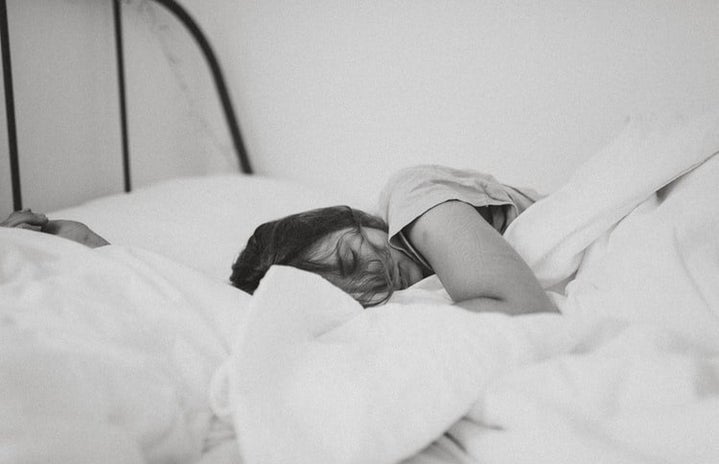It’s the middle of the night and you suddenly find yourself awake… except your body seems to still be asleep. And as if this isn’t already terrifying enough, as you lie there helpless and paralyzed in your bed, a demon appears to be paying you a visit too. As the black figure makes its way across the room towards you, you suddenly feel a pressure on your chest and it becomes hard to breathe. Silently panicking, unable to speak or move, a sense of impending doom begins to rise.
You miraculously awaken the next day, alive. But the events of the night before seem all too real to just be a dream. So, what happened?
What is Sleep Paralysis ?
Sleep paralysis remains an unexplained phenomenon which most people will experience once or twice in their life. Whilst there has not been any scientific explanation for it, sleep experts have suggested that sleep paralysis is the result of an in-built safety mechanism in humans and occurs during the Rapid-Eye Movement (REM) of the cycle of sleep, in which we dream. When we dream, are bodies are relaxed and our muscles naturally lose tone to stop us physically acting out whatever we are dreaming about.
Sleep paralysis happens when we suddenly move from a phase of sleep to a phase of wakefulness, but our bodies are still relaxed and in the sleep phase. Hence, we are stuck in a confusing (and scary) transition of unconsciousness to consciousness. And of course, to make matters worse, sleep paralysis happens in the night when our rooms are pitch black, making it even more terrifying.
So Why is There a Demon in my Room?
Not everyone who experiences sleep paralysis is lucky enough to also wake up to a demon sitting on the end of their bed. The blessed few who do, however, experience what is called hypnopompic hallucinations, which often accompanies sleep paralysis. Hypnagogic hallucinations can occur when we are falling asleep and are often pleasant visions such as colourful patterns and images. Hypnopompic hallucinations, on the other hand, happen when we are transitioning out of the REM cycle of sleep, making them far more vivid and real to us.
It has not been fully understood as to why the brain chooses to depict a petrifying vision of a dark figure coming to murder you in the night, but research suggests it has something to do with a momentary lapse of the brain as it tries to process bodily perception. When we experience a hypnopompic hallucination during an episode of sleep paralysis, our brain automatically projects the image of a body onto an object, creating a distorted (and highly disturbing) image of something else. So, what might seem like the Grim Reaper staring at you in the corner of the room is actually just a pile of clothes stacked on a chair, waiting to be ‘put away’.
What’s more, the part of your brain responsible for emotion, known as the amygdala, is highly active during the phase of REM sleep. But when we experience sleep paralysis, the brain cannot tell what is real from what isn’t, so it cannot reassure us that our murderous visitor is simply a hallucination.
So, although the ominous intruder is no more than a freaky hallucination and your brain playing tricks on you, the temporary paralysis is more than real!


